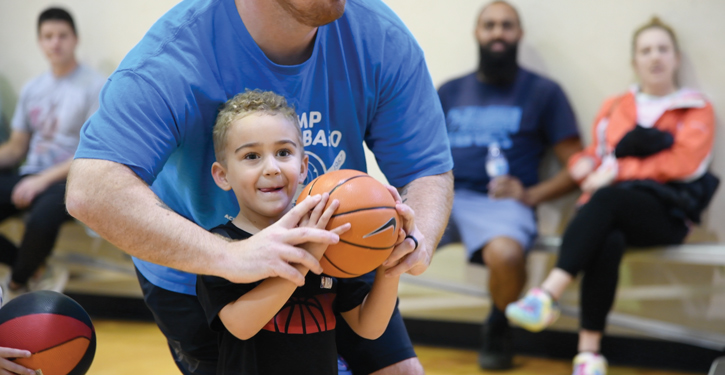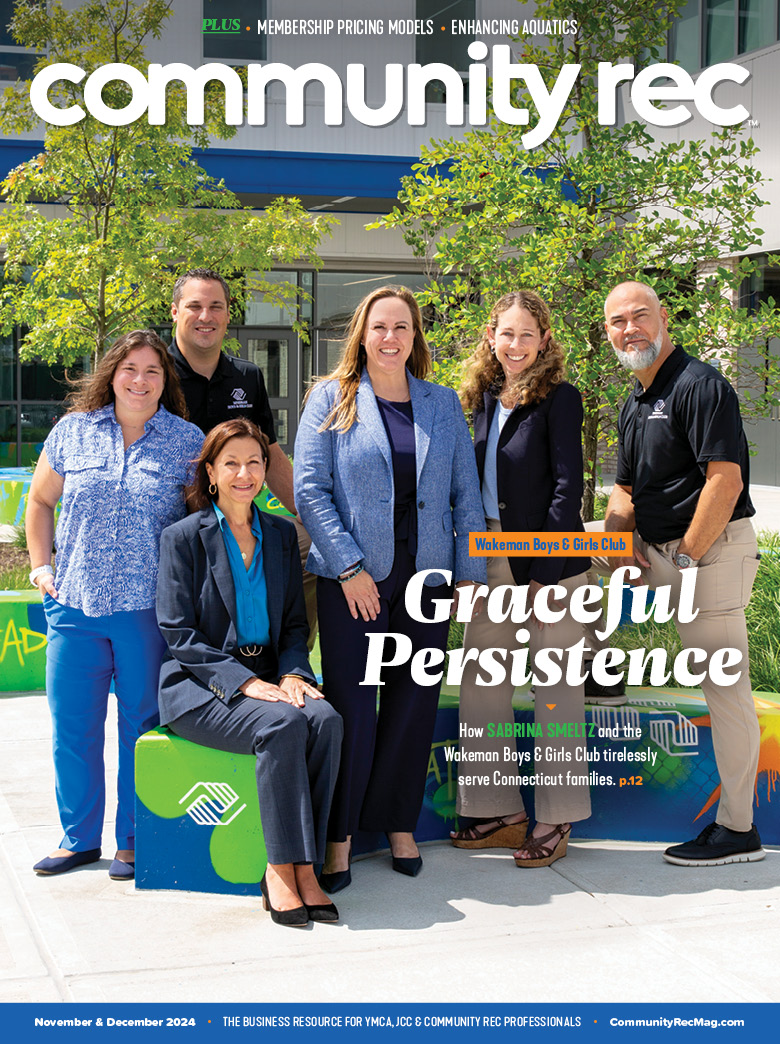Tips from industry professionals to enhance youth fitness programming.
Many community rec centers that host youth sports programming are looking for ways to get the number of players up to pre-COVID-19 numbers. To increase revenue and participants, leaders have been turning to a variety of strategies including new offerings, marketing toward different groups and more.
The YMCA of Rock River Valley prides itself in its variety of offerings including the classics of football, basketball, baseball and soccer along with more unique offerings like tumbling, dance, martial arts, rock climbing, a Special Olympics swim team and a ninja gym.
According to Melissa Burns, the vice president of operations at the YMCA of Rock River Valley in Rockford, Illinois, offering a wide variety of sports allow parents and children to discover what they enjoy doing most. “People are looking for more types of offerings outside of just soccer,” she said. “For example, even if a little one is in our childcare, parents can sign a waiver, and we can take the kids ages three and up to get exposure at our rock wall.”
Building interest early on is something Burns not only emphasized the power of but mentioned many parents are trying to do as well. The Y offers introductory classes beginning at 18 months old to start exposure to these activities. Once children reach three years old, they can be introduced to more traditional programming in what they really want to do, which benefits participating families.
“We’re not only giving them the exposure, but we’re also figuring out what our niches and what our community wants which is really important,” explained Burns. “We know what we do well and some things we don’t do so well.”
A recent improvement the Y has made is changing its scheduling and sign-up process. Last year, parents signed up for six-to-eight-week sessions for youth sports, but that has changed to monthly. Now, families can register for up to three months of programming at a time which streamlines operations for households and the YMCA.
“Because they’re signing up ahead of time, it’s a monthly draft,” said Burns. “It’s a guaranteed revenue stream for the YMCA and out of sight, out of mind for both of us. We’ve seen nothing but growth from participation numbers to revenue from all of our programs.”
Another organization that has found success in a different revenue stream is the Sidney-Shelby County YMCA in Sidney, Ohio. Along with team programming, the Y offers classes where participants can develop specific skills. The most popular has been basketball where each week focuses on skills like zone defense, passing the ball and more.
“Development has been big for us,” said Tyler Barhorst, the operations director at the Sidney-Shelby County YMCA. “We’re tapping into the underserved market of kids who don’t necessarily want to be in a competitive program but still want to play these sports. They’re still working on skills regardless of their level of play. There’s always room to improve.”
Another plus to these classes involves the intimate settings where participants can receive more individualized attention. Barhorst noted their success in the YMCA’s smaller community and differentiated the organization from schools and youth sports programming in the area.
“We’ve had kids from preschool all the way up to just before high school want to be a part of this program,” said Barhorst. “Maybe they didn’t make their middle school basketball team and want to work on more skills, or maybe they want to give it a shot for the first time. We’re trying to make sure everybody has a valuable experience and feels involved and seen.”
This sentiment also extends to staff and coaches. Barhorst emphasized the need to support them in order to improve operations. “There’s really no better way to set up your program for success,” he said. “Community centers are an increasingly relational business. We might not have the top equipment or highest qualified coaches, but we’ll make sure you feel connected. Enable your staff to be themselves and let them make those relationships with parents and kids.”
The team at the JCC Indianapolis also noted how relationships have positive effects on their program. Because the organization has been a part of the greater community for a long time, those who used to be in youth sports programming are involving their own children now.
“We have active older adults who remember being in our early childhood education program and coming through the J,” said Cathleen Hamilton, the director of fitness and recreation. “Now they’re in our SilverSneakers program and are watching their grandchildren take sports classes they may have participated in when they were younger.”
Much like both YMCAs, the JCC has also increased the variety of classes offered with niche programming like fencing, martial arts and pickleball. A big emphasis for the J is to find ways to build interest in different sports.
One way the JCC has done this is through ‘try it’ days to increase exposure for certain programs. For younger children in childcare, it happens during the school day, typically from 9 a.m. to 4 p.m. Older children experience them while in afterschool care typically from 4 p.m. to 5:30 p.m. Having these sessions at intentional times also impacts their success.
“We’re a stepping stone where kids can fall into niche programming pretty early,” said Hamilton. “We love being able to offer a variety of trial sports for kids to really get an idea of what they enjoy before they potentially jump into their main sports as they become older.”
Hamilton also noted youth fitness isn’t limited to youth sports. An example is their partnership with JumpBunch to hold fitness classes that encourage movement and necessary health developments. Classes are offered to a wide age range from preschool to middle school.
“Be as creative as possible,” advised Hamilton. “Physical activity can look like a lot of different things depending on the needs of the child as well. While it’s always important to mention sports, we also offer programming that may serve for a piece of youth fitness that’s different than a typical sport.”
Improving a youth sports program can be a long process. Understanding and working toward your community’s specific needs should be the basis for any changes, but more is required to create successful opportunities for families.
Finally, a last tip from Barhorst is along the way, look to improve yourself as well. “One of the biggest mistakes I’ve made in my career was not looking for more opportunities to get better,” he said. “If you can get 1% better every day, by the time you’re done, you’ll have made such a huge impact in your community. There’s nothing better than being able to say, ‘These kids that were in my program went on to join our high school volleyball team and were a huge success. My work did that.’ It’s so rewarding.”










